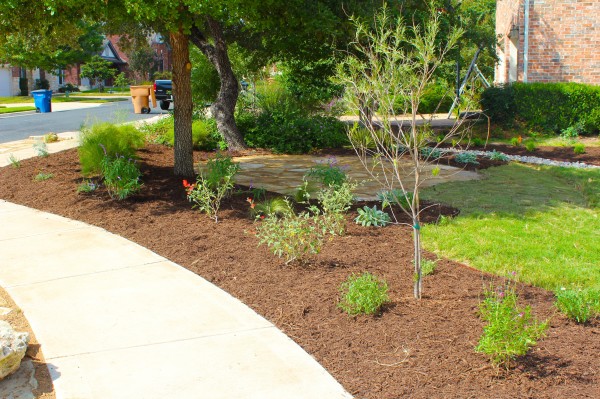Xeriscaping the answer for drought defense


Punishing heat and drought. It’s a combination you wouldn’t wish on your worst gardening enemy. Keeping your landscape alive under these conditions presents a backbreaking and expensive challenge.
While we’ve had some welcome rain this summer, homeowners are still searching for alternatives to minimize their water use, their water bills and the hours spent trying to supplement with hand watering. Luckily, there are alternatives.
No, I don’t mean paving the front yard or filling it in with gravel and 3 cacti. Xeriscaping holds the key to adapting Austin’s landscapes to the changing climate of extremes sweeping the country.
Xeriscaping is a concept that originated in Colorado years ago during a severe drought. It comes from the Greek words ‘xeros’ (dry) and ‘scape’ (view).
It is definitely not “zero” scaping, as some mistakenly call it. And it doesn’t mean never having to water or care for plants.
It means developing a water-efficient landscape through the use of good planning, appropriate plant and lawn selection, efficient irrigation, use of mulch and proper maintenance.
Texas’ fast-growing population and repeated periods of drought continue to strain the limits of our water supply. Years ago, water rationing used to be a rare measure reserved for particularly hot summers for brief periods of time.
Year-round limitations are now the norm. I’m not sure how long we’ve been subject to continuous water rationing. (Actually, I looked it up – the City of Austin’s restrictions have been constant since September 2012.
So, what are the steps to developing a xeric landscape that will flourish in our extremely hot and dry conditions?
Seven principles of Xeriscaping
-
Good planning
-
Soil analysis
-
Appropriate plant and lawn selection
-
Practical lawn choices
-
Efficient Irrigation
-
Use of mulch
-
Proper maintenance
Plan ahead
Planning is important. Research the best plants and turf to use. Before you begin – think about the water needs of your landscape. If you plan well, you can cluster plants with low water needs together. And have your soil tested to determine if additional minerals or fertilizer might make your plants or soil healthier. Add necessary amendments and compost when building beds.
Pick native and well-adapted plants
Reducing the amount of turf grass in your landscape and expanding use of native plants can significantly reduce water consumption. Native plants are also generally less susceptible to disease and harmful insects and have less fertilizer or special soil needs. There are plenty of xeric plants from which to choose—trees, shrubs, perennials, groundcovers and grasses—that can provide your garden with color and blooms all year.
A few of the popular native or well-adapted plants for our area include:
- Artemesia
- Salvia
- Lavender
- Santolina
- Gregg’s Mist Flower
- Desert Willow
- Mexican Bird of Paradise
- Dwarf yaupon holly
- Rosemary
- Euphorbia
- Jerusalem sage
- Agaves
- Yuccas
- Cacti
- Skullcap
- Texas Sage
- Blackfoot Daisy
- Daimianita
- Zexmenia
Check with your local nurseries to learn more about other xeric Zone 8 plants.
These websites are also excellent resources:
http://www.ci.austin.tx.us/growgreen/plants.htm
http://aggie-horticulture.tamu.edu/
Water wisely
Consider switching to more efficient methods of irrigating. Most sprinklers—both automated systems and hose-end, waste a great deal of water to evaporation. Watering is best done in the very early morning hours to prevent scorch and to minimize evaporation—even before sun-up for early birds or those with automatic systems.
The current City of Austin Stage 2 Watering Restrictions are as follows:
Automatic Irrigation – Residential
Even Address numbers – Thursday
Odd Address numbers – Wednesday
Before 5 a.m. or after 7 p.m.
Hose-end sprinkler– Residential
Even Address numbers – Sunday
Odd Address numbers – Saturday
Before 5 a.m. or after 7 p.m.
Overwatering or watering improperly also present problems. Too much water too often encourages plants to keep shallow roots. Less frequent, deep watering develops deep roots away from surface heat that will eventually require less water.
An excellent option to reduce water use, drip irrigation keeps water next to the plants and allows almost no evaporation. The soil absorbs and uses all the water, whereas sprinklers often saturate soil too quickly, resulting in water runoff.
Collecting rainwater (when we are lucky enough to get it) is another way to conserve. From simple rain barrels placed under downspouts to large commercial systems, using this “free” water is always a good choice, especially since plants prefer natural rainwater to tap water that is chemically-treated.
One turf is not like the other
Lawns can drink up a lot of water. Most xeric landscaping plans minimize the amount of turf in the landscape, replacing it with paths, patios, seating or entertaining areas or xeric beds. Determine the most drought-tolerant grass for your area (sun or shade). Grass should be mowed high, allowing longer blades to help protect the roots from the heat and to hold in moisture. Grass should be mowed when it is about 1/3 higher than you want it to be. Bermuda should be mowed at 1.5 to 2.5 inches, Buffalo Grass at 4 inches, and Zoysia at 2 inches. Clippings left on the lawn help return nitrogen to the soil, so they don’t need to be collected.
Keep roots cool
Critical to plant survival, mulching beds helps insulate plants, keeping soil temperatures lower and cutting down on evaporation. There are a variety of good mulches from which to choose, including Native Texas Hardwood mulch, shredded cedar, pine needles or other shredded barks. Several inches of mulch should be applied to ensure sufficient insulation.
Now, maintain it
Proper pruning, weeding and fertilizing helps keep your landscape healthy. Instead of chemicals that can contaminate our ground water, use organic fertilizers and pest control options to address problems that may arise in the garden. Check with local nurseries for good organic choices.
For more information, check out the City of Austin’s Grow Green Program – an extensive water-wise public education program. Grow Green offers an extensive selection of free gardening how-to materials throughout the Austin area. Local nurseries carry the program’s free fact sheets and the very popular Native and Adapted Plant Guide that includes 200 recommended plants that will thrive in Central Texas.
Local Landscape Designer and Garden Coach Diana Kirby provides landscaping tips at http:/www.dianasdesignsaustin.com and writes a garden blog at https://www.dianasdesignsaustin.com

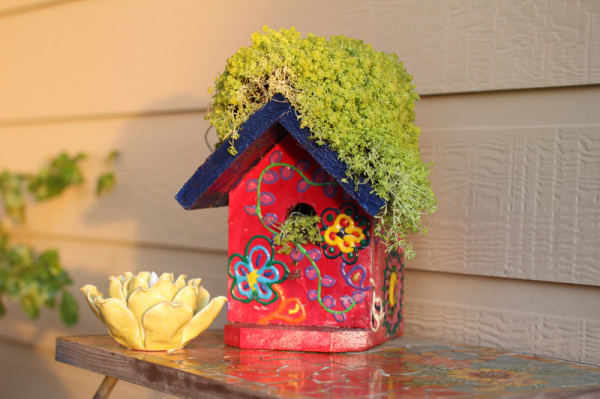

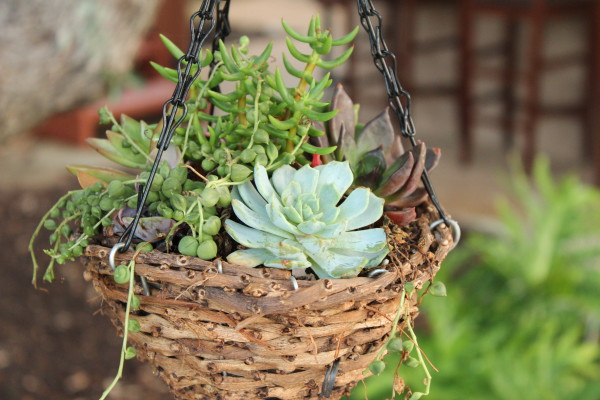
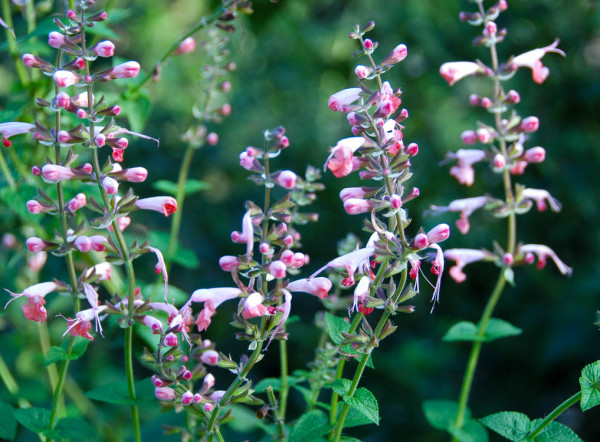
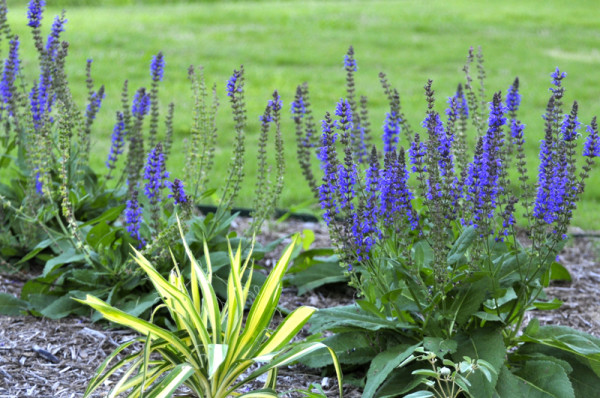 Take a stroll through almost any Central Texas garden and chances are you’ll come upon at least one type of salvia.
Take a stroll through almost any Central Texas garden and chances are you’ll come upon at least one type of salvia.